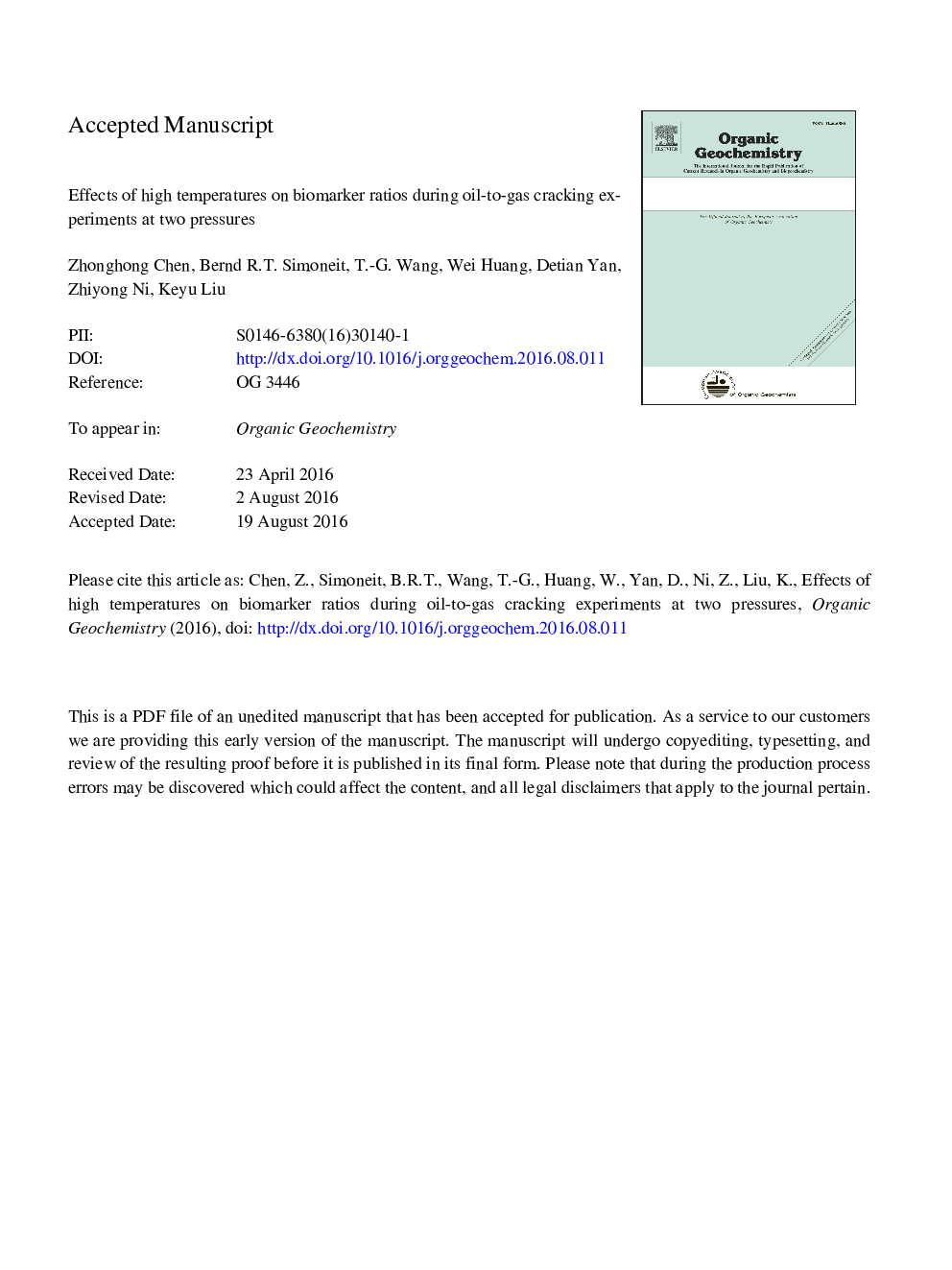| Article ID | Journal | Published Year | Pages | File Type |
|---|---|---|---|---|
| 5161492 | Organic Geochemistry | 2016 | 88 Pages |
Abstract
Variations in biomarker concentrations, including tricyclic terpanes, tetracyclic terpanes, pentacyclic triterpanes, steranes, methylphenanthrenes and triaromatic steranes, were investigated at two different pressures (0.1 and 20 MPa) in multiple laboratory simulation experiments of oil-to-gas cracking. The low-maturity non-marine oil samples used in the study are from the Paleogene Shahejie Formation in the Dongying Depression, Bohai Bay Basin, eastern China. The oils were pyrolyzed to gas at elevated temperatures (300-650 °C) in an autoclave. The oil residue was sampled and analyzed at 50 °C temperature intervals. The results show that changes in biomarker concentrations are controlled mainly by temperature, while high pressures exert non-linear suppression effects on these variations. There appear to be different evolution regimes based on biomarker cracking and generation rates in the primary (400-500 °C for 0.1 MPa and 450-550 °C for 20 MPa) and secondary (500-650 °C for 0.1 MPa and 550-650 °C for 20 MPa) oil-to-gas cracking stages. Generally, the biomarker ratio differences are considerable in the early primary oil-to-gas cracking stage but decrease substantially in the later primary oil-to-gas cracking stage. The differences remain stable at high temperatures in the secondary oil-to-gas cracking stage. These oil-to-gas pyrolysis experiments reveal the characteristics of biomarker ratios, which are quite different from their distribution within the conventional “liquid window” at moderate maturity level. They provide new insights on oil biomarker maturity parameters under high temperatures and the change of oil and gas in deep buried basins.
Related Topics
Physical Sciences and Engineering
Chemistry
Organic Chemistry
Authors
Zhonghong Chen, Bernd R.T. Simoneit, T.-G. Wang, Wei Huang, Detian Yan, Zhiyong Ni, Keyu Liu,
